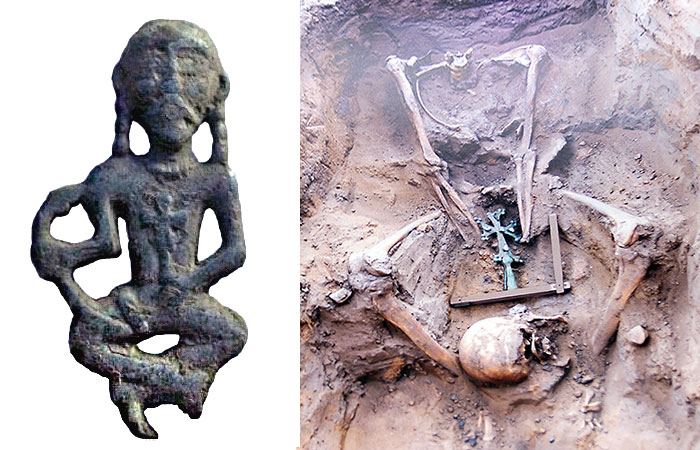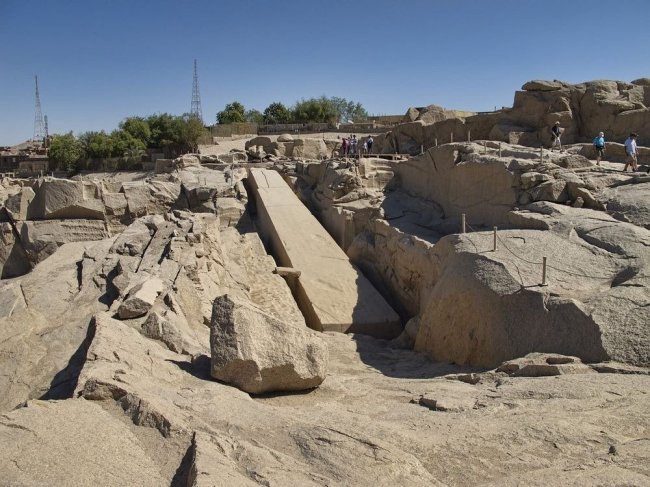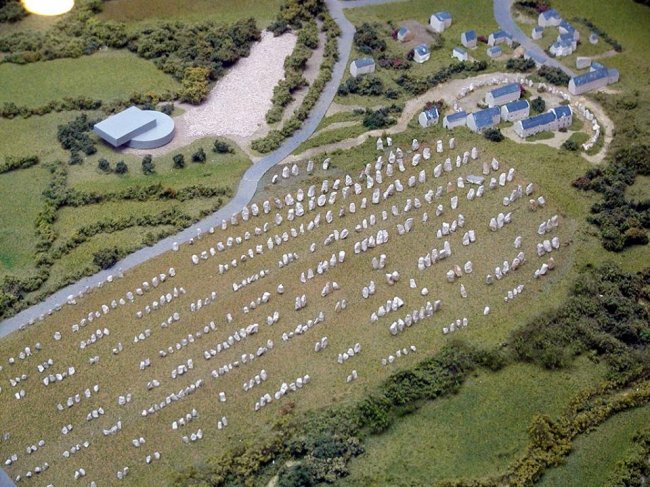wooden buildings
Who was the legendary Troyan from “The Tale of Igor’s Campaign”: A long way to the East and back to the West
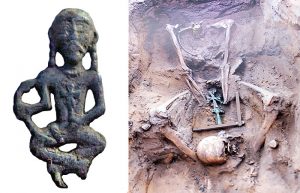 The story that will be discussed on these pages began with a find of an unusual item on the territory of Ukraine. It was a figure of a person sitting cross-legged (we call this position “Turkish”) a person holding a snake in his right hand that stings him in the shoulder, in the left person holds a cross with blades widening towards the ends. Unfortunately, the first find, which became known to the author, suffered from a significant drawback; the figurine lacked a head.
The story that will be discussed on these pages began with a find of an unusual item on the territory of Ukraine. It was a figure of a person sitting cross-legged (we call this position “Turkish”) a person holding a snake in his right hand that stings him in the shoulder, in the left person holds a cross with blades widening towards the ends. Unfortunately, the first find, which became known to the author, suffered from a significant drawback; the figurine lacked a head.
An unusual find caused a lot of questions and the main one – who was depicted by an ancient master with such unusual symbols? An ornament resembling beads around a neck of a figure (possibly a hryvnia, a symbol of high status in society), crossed legs of a low-sitting figure, all evoked in memory a similar figure from the pantheon of gods of ancient Celts, Cernunnos (or Cernunns), (Horned).
An excellent image of this god is known on the chased bas-relief of a silver cauldron. Continue reading
Giant images of the Nazca Valley: Communication with a deity or signals to space ships?
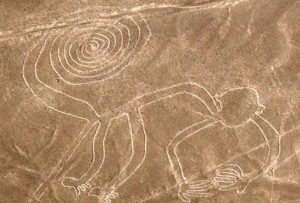 Civilizations left in the past have left riddles to modern man, on the solution of which the best minds of historians and archaeologists are thrown. A number of riddles have an explanation, but some remain a mystery throughout the centuries, which scientists cannot explain. One such mystery was the giant drawings in the Nazca Valley in South America.
Civilizations left in the past have left riddles to modern man, on the solution of which the best minds of historians and archaeologists are thrown. A number of riddles have an explanation, but some remain a mystery throughout the centuries, which scientists cannot explain. One such mystery was the giant drawings in the Nazca Valley in South America.
Geoglyphs
The Nazca Plateau is located in the southern part of Peru and covers an area of approximately 7 kilometers by 50 kilometers. For a long time, local residents paid attention to the lanes stretching along the valley for tens of meters, considering that they were made to help the travelers with orientation. Some of the bands were straight, some had a different form – one way or another, until humanity invented air transport, nobody could look at the patterns entirely. Continue reading
How did dog collars change from ancient Egypt to the present day: Thorns, castles and diamonds
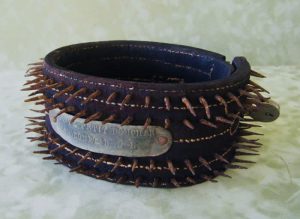 Dogs have been accompanying humans for thousands of years as loyal helpers, protectors, and companions. Today it is no longer known who first thought of putting a dog collar on the dog and under what circumstances this significant event happened. But we know something about how the collars looked in antiquity and how long the dogs began to wear them. Thanks to the extravagant dog collars of past epochs that have survived to the present day, we can judge the history of the use of these intelligent and faithful animals by our ancestors.
Dogs have been accompanying humans for thousands of years as loyal helpers, protectors, and companions. Today it is no longer known who first thought of putting a dog collar on the dog and under what circumstances this significant event happened. But we know something about how the collars looked in antiquity and how long the dogs began to wear them. Thanks to the extravagant dog collars of past epochs that have survived to the present day, we can judge the history of the use of these intelligent and faithful animals by our ancestors.
Egyptian artwork
As you know, the ancient Egyptians loved their cats very much. However, they loved dogs no less. They were also worshiped, honored as hunters and defenders, and the dog always had the privileged position of his master’s companion in the hunt. Continue reading
